South Georgia & Falkland Islands
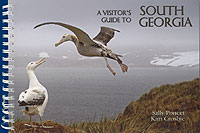
A Visitor's Guide to South Georgia

Sally Poncet & Kim Crosbie
Wildguides Ltd. First edition 2005
ISBN 1-903657-08-3
Softcover (A5 binder), 180 pages

The Island Of South Georgia

Robert Headland
First published 1984; Digitally reprinted in 2009. ISBN 978-0-521-25274-4 (hardback), 978-0-521-25274-5 (paperback)
293 pages.
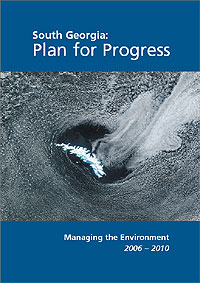
South Georgia: Plan for Progress - Managing the Environment 2006-2010
Compiled by Dr Liz Pasteur and Prof David D.W. Walton
Published by the British Antarctic Survey on behalf of the Government of South Georgia and the South Sandwich Islands
ISBN (none)
This is the new, digital, version of the 2000 publication Environmental Management Plan For South Georgia (reviewed below).
This publication can be viewed online or can be downloaded from the South Georgia website.
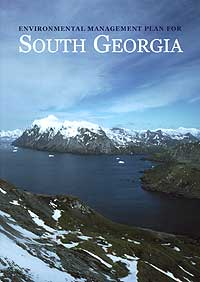
Environmental Management Plan For South Georgia

Dr Elizabeth McIntosh, Dr David W.H. Walton (samenstelling)
British Antarctic Survey, at the request of the Government of South Georgia and the South Sandwich Islands. 2000
ISBN (n/a)
Practical book on A4-format containing information on the flora and fauna (species, which ones can be found where), history and conservation measures to protect South Georgias unique eco-system from fishery, tourism and other influences. Note that this publication has now been replaced by South Georgia: Plan for Progress - Managing the Environment 2006-2010 (see previous review).
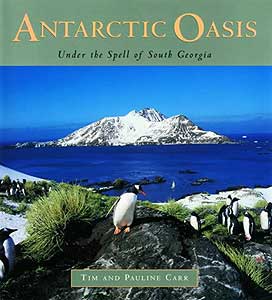
Antarctic Oasis - Under the spell of South Georgia
Tim & Pauline Carr
W.W. Norton, 1998. ISBN 0393046052
Book of photographs by Tim en Pauline Carr, who, until a couple of year ago, lived on South Georgia and ran the museum there. 255 pages.
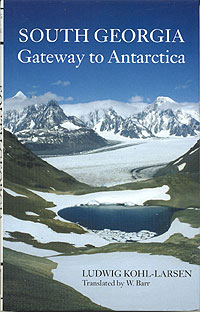
South Georgia: Gateway to Antarctica

Ludwig Kohl-Larsen (translation by William Barr)
Bluntisham Books, The Erskine Press, 2003. ISBN 1.85297.075.8
Hardcover, 294 pages. With black and white photographs and fold-out map.
Published in 1930 Ludwig Kohl-Larsen's German book An den Toren der Antarktis has finally been translated into English. Kohl-Larsen stayed on the island from September 1928 until May the next year, accompanied by his wife and cameraman Benitz. The three visited bays and glaciers all around the island to make scientific observations and collect specimens for a German museum. Whaling vessels bring them ashore and pick them up after a number of days. Frequently the weather is harsh: snow storms, rain, fog, grey clouds and often they are unable to leave their tent. But when they can, they undertake ski-hikes across the island, which is not always without danger. They even camp on Annenkov Island, a small island off South Georgia where they search for the Wandering Albatross.
Throughout the book, there is the contrast between the continuous slaughter of whales and seals on one side and Kohl Larsen's love for nature on the other side - though he has to kill animals too to survive and for the collection of specimens. One realize the enormous impact of whalers and sealers have had on the island: whaling is incredibly efficient by 1928; penguin, albatross and petrel eggs are taken for the kitchen; shags are shot for their meat and for fun; rats and reindeer have been introduced to the island and change the vegetation and last but not least: only a single fur seal is spotted during the eight months the expedition camps on the island (sealing had wiped virtually all of them out a century earlier). Yet even though he doubts man's impact on the island and its surrounding seas is sustainable, Kohl-Larsen speaks with great respect of whalers and sealers. It could be he had no choice, given his marriage to the daughter of C.A. Larsen, the man who started whaling on South Georgia in 1904...
Black and white photographs accompany the text, which is well written and translated. In the back of the book is a fold-out map of South Georgia, creates by Kohl-Larsen. The only thing I missed was an index of names and places. And it would have been great to have also included a DVD with the footage shot by Benitz! By coincidence I found two short movies of this expedition on the website of the Sandefjord Hvalfangstmuseet (Whaling Museum). I read this book almost in one go - that is a good sign.
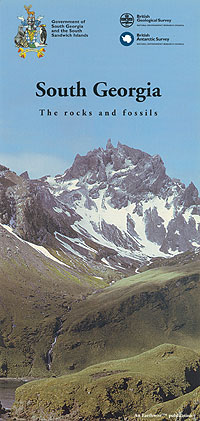
South Georgia - The rocks and fossils
Phil Stone & Geoff Tanner
British Geogological Survey, 2004
ISBN 0852724667
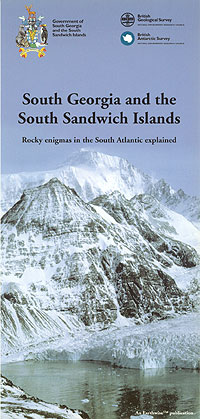
South Georgia and the South Sandwich Islands - Rocky enigmas in the South Atlantica
Phil Stone & John Smellie
British Geogological Survey, 2002
ISBN 0852724160
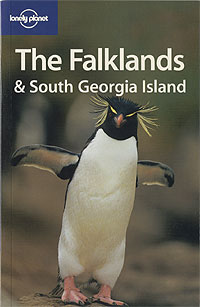
The Falklands & South Georgia Island (Lonely Planet)

Tony Wheeler
Lonely Planet, 2004. ISBN 1.74059.643.9
Compact and handy (200 pages) like all other Lonely Planets. Three quarters of this guide is dedicated to the Falklands, a smaller part covers South Georgia (which is less touristic indeed).
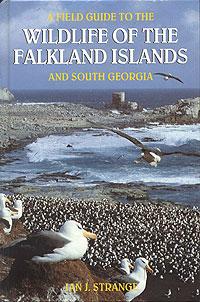
A Field Guide To The Wildlife Of The Falkland Islands And South Georgia

Ian J. Strange (text and illustrations)
Harper Collings Publishers. First print, 2002. ISBN 0-00-219839-8
Compact and handy hardcover (188 pages). With many black and white photographs, drawings and maps, as well as colour plates in the middle of the book. Includes glossaries, index and selected bibliography. Unlike the Lonely Planet covering the same islands, this book is dedicated to all the fauna and flora, including shells (molluscs) and plankton. The author not only covers the individual species, but also the relationship between them, such as which types of grass grow in which type of landscape. A good addition to the Lonely Planet.
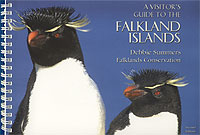
A Visitor's Guide to the Falkland Islands
Debbie Summers
Falkland Conservation, 2001, second edition 2005. ISBN 0-9538-3715-7
Softcover (A5 binder), 134 pages
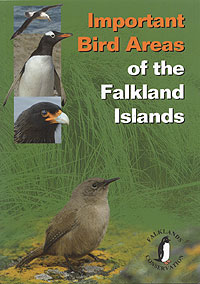
Important Bird Areas of the Falkland Islands
Falkland Conservation (no individual authors)
Falkland Conservation, 2006 ISBN 0-9538371-6-5
Softcover, 160 pages

Atlas of Breeding Birds of the Falkland Islands
Robin Woods & Anne Woods
Antholy Nelson, 1997. ISBN 0904614-60-3
Hardcover, 190 pages
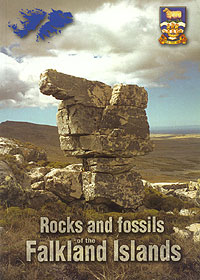
Rocks and Fossils of the Falkland Islands

Phil Stone, Don Aldiss & Emma Edwards
British Geological Survey & Falkland Islands Government Department of Mineral Resources, 2005. ISBN 0.85272.494.2
Practical and lavishly illustration guidebook (61 pages) dedicated to the different geological regions that make up the Falkland Islands. The booklet also explains about the fossils that are found on the island: trilobites, snails and other invertebrates sea species.
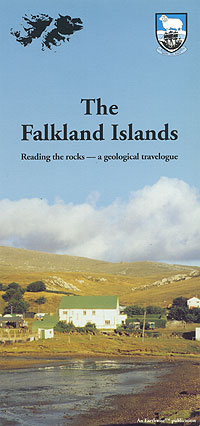
The Falkland Islands, reading the rocks - a geological travelogue
Phil Stone & Don Aldiss
British Geological Survey, 2001. Eartwise Publication
Fold-out map (six pages, plastified) with basic information, illustrations and photographs that explain the geological history of the Falkland Islands.
Tristan da Cunha
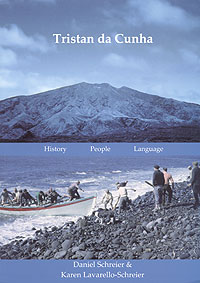
Tristan da Cunha - History, People, Language
Daniel Schreier, Karen Lavarello-Schreier
Battlebridge Publications. ISBN 1.903292.03.4 (2004)
Booklet (88 pages) written by two people from the island of Tristan themselves. It provides a concise and complete overview of the island's history, with special attention to the language (including a Tristan word list at the last section). Illustrated with black and white photographs.
Chatham
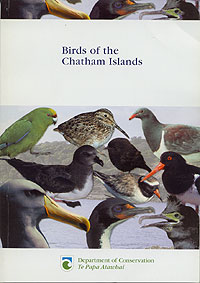
Birds of the Chatham Islands
Aikman, Hilary and Colin Miskelly
Wellington: Department of Conservation, 2004
ISBN 1.903292.03.4 (2004)
Paperback, 116 pages full of colour photographs and maps. This small guide describes all 68 breeding species as well as four non-native wader species. Although the reproduction of the photographs could have been better, they do show the bird species quite well.